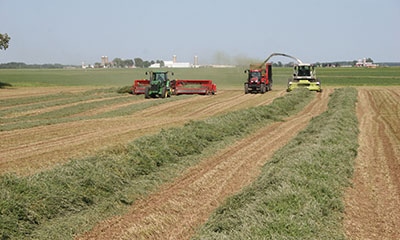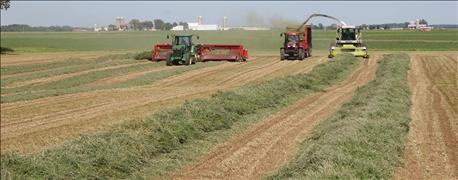April 18, 2016

The first cutting of alfalfa is generally the highest-yielding cutting of the year, as subsequent cuttings tend to be lower, according to Chippewa County Extension Crops and Soils Agent Jerry Clark.
"Depending on the cutting system, the percentage of the total yield contributed by the first cutting ranges between 30% and 40%, with the remaining cuttings adding 25% to 30%," Clark says.
Of course, waiting for maximum yield has a trade-off in quality.
"As it nears maturity, first-crop alfalfa will decrease in quality quicker than other cuttings," Clark notes. "Keep in mind, quality of the first cutting changes at the fastest rate, and later cuttings change in fiber at a slower rate."

Waiting for maximum alfalfa yields has a trade-off in quality.
Research indicates that the first cutting decreases about five points of relative feed value per day, second cutting decreases two to three points per day and third and fourth cuttings during the growing season decline one to two points per day, Clark says.
"Relative forage quality will change about the same as Relative Feed Value on first cutting and then decline about three points per day on second, third and fourth cuttings during the growing season. If you consider that five-day delay, you end up with a decline in RFV (or perhaps relative forage quality) of about 20 points."
You May Also Like




